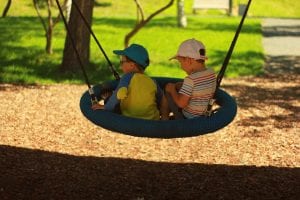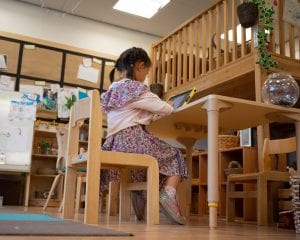Sight. Touch. Sound. Taste. Smell.
 Take a deep breath and imagine yourself at your happy place. Take in everything around you- the sights, the sounds, and the aroma. Think about how your body feels in your seat, if you’re sitting, or how it feels no matter where you are. A few minutes of mindfulness in your happy place should make you feel more relaxed because you are able to focus on each of your senses, one at a time and your senses are processing the information around you.
Take a deep breath and imagine yourself at your happy place. Take in everything around you- the sights, the sounds, and the aroma. Think about how your body feels in your seat, if you’re sitting, or how it feels no matter where you are. A few minutes of mindfulness in your happy place should make you feel more relaxed because you are able to focus on each of your senses, one at a time and your senses are processing the information around you.
But for kids with a sensory processing disorder, they may not process this information the same way, and may not find this exercise as relaxing. In fact, it may feel overwhelming and anxiety-inducing which is why they may need sensory toys.
Sensory Processing Disorder can affect anyone. Studies indicate that 5% to 16% of children exhibit symptoms of SPD.
Kids that have sensory issues may benefit from using sensory toys. As awareness grows, many schools allow children to use these tools, with or without a formal Individualized Education Plan, or I.E.P. (or a 504 plan) in place. In fact, our local Flynn Theater even has a sensory toy kit available during children’s performances where kids can borrow noise cancelling headphones, weighted blankets, stuffed animals, and wiggle cushions. The Flynn Theater, in Burlington, VT also offers sensory-friendly programming where they minimize the lights and noise during a performance.
Regardless if your kiddo has a sensory processing disorder diagnosis or not, (here is a useful checklist if you want to talk to your child’s doctor about SPD) they may benefit from some of these sensory toys that we love in our house.
Sensory Toys (or Tools!)
1. Swings

2. Putty

3. Wiggle Seat

4. Chew Toys
Technically called “oral sensory chews”, necklaces, pencil toppers, sticks, and bracelets and lead-free, made from medical-grade, FDA-approved silicone, and are latex, BPA, PVC, and Phthalate free. We’ve gotten ones with cool shapes, dinosaurs, and more. For kids that chew their t-shirts or lick their lips a lot, they may benefit from this more acceptable oral stimulation which may feel more like a sensory toy than a tool to them.
5. Noise Cancelling Headphones

If you would like more information about SPD, please check out Sensational Kids: Hope and Help for Children With Sensory Processing Disorder(New York: Perigee, 2014, 2nd edition). written by Founder and current Executive Director of STAR Institute, Lucy Jane Miller Ph.D., OTR.











As a parent of a child with sensory issues, I truly appreciate the fantastic selection of sensory toys you’ve highlighted in this blog. These toys seem not only fun but also beneficial for my child’s development and well-being. Among the wonderful options listed, I’d like to recommend the “LoveHugs weighted teddy” as an excellent addition to the collection. With its calming and comforting effects, the weighted teddy can provide a sense of security and help my child manage their sensory challenges through play. Thank you for sharing these amazing suggestions!